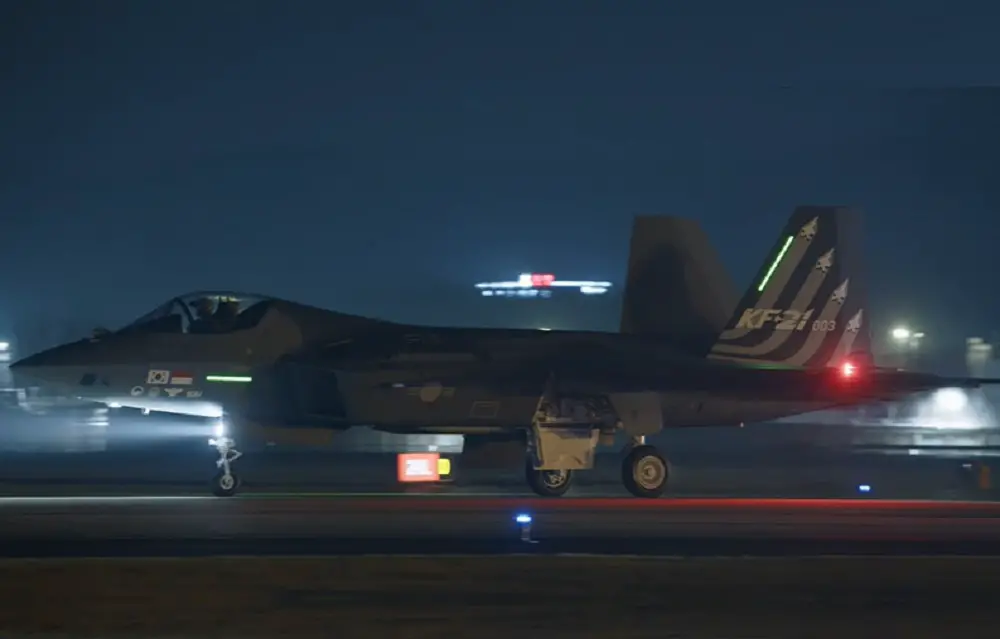South Korea’s indigenous KAI KF-21 Boramae fighter jet prototypes have successfully conducted their first nighttime flights. It marked the first time that the KF-21 model in development has conducted a night flight. The third and fourth prototypes of the KF-21 conducted the test flights the previous night, as their lighting device operated normally, according to the Defense Acquisition Program Administration (DAPA). The first prototype of the model was successful in its maiden flight on July 19 last year, followed by the test flight of a twin-seat prototype on Feb. 20. DAPA has a plan for a total of more than 2,000 test flights of the KF-21 model by early 2026.
The KAI KF-21 Boramae (formerly known as KF-X) is a South Korean-led fighter aircraft development program with the goal of producing an advanced multirole fighter for the South Korean and Indonesian air forces. The airframe is stealthier than any fourth-generation fighter, but does not carry weapons in internal bays like fifth-generation fighters, though internal bays may be introduced later in development. The program is led by the South Korean government, which holds 60% of the program’s shares. Indonesia took a 20% stake in the program in 2010, and the remaining 20% are held by private partners including the manufacturer Korea Aerospace Industries (KAI).

The KAI KF-X is South Korea’s second domestic fighter jet development program, following the FA-50. In April 2021, the first prototype was completed and unveiled during a rollout ceremony at the headquarters of KAI at Sacheon Airport. It was officially given the name Boramae(Young Hawk or Fighting Hawk). The first test flight was conducted on 19 July 2022, with manufacturing scheduled to begin in 2026. At least 40 aircraft are planned to be delivered by 2028, with South Korea expecting to deploy a total of 120 of the aircraft by 2032. It will also be available for export market.
Hanwha Techwin signed an agreement with General Electric to manufacture General Electric F414 engines for KF-X aircraft. Lockheed Martin agreed to transfer two dozen F-35A technologies as part of a purchase deal. However, the US government blocked the transfer of four vital technologies: AESA radar, infrared search and track (IRST), electro-optical targeting pod (EO TGP), and radio frequency jammer (RF jammer) technology. AESA radar was co-developed with Hanwha Systems. IRST is based on the Leonardo SkyWard variant called the SkyWard-K with modified back-end and a Korean software that replaces the original program.















